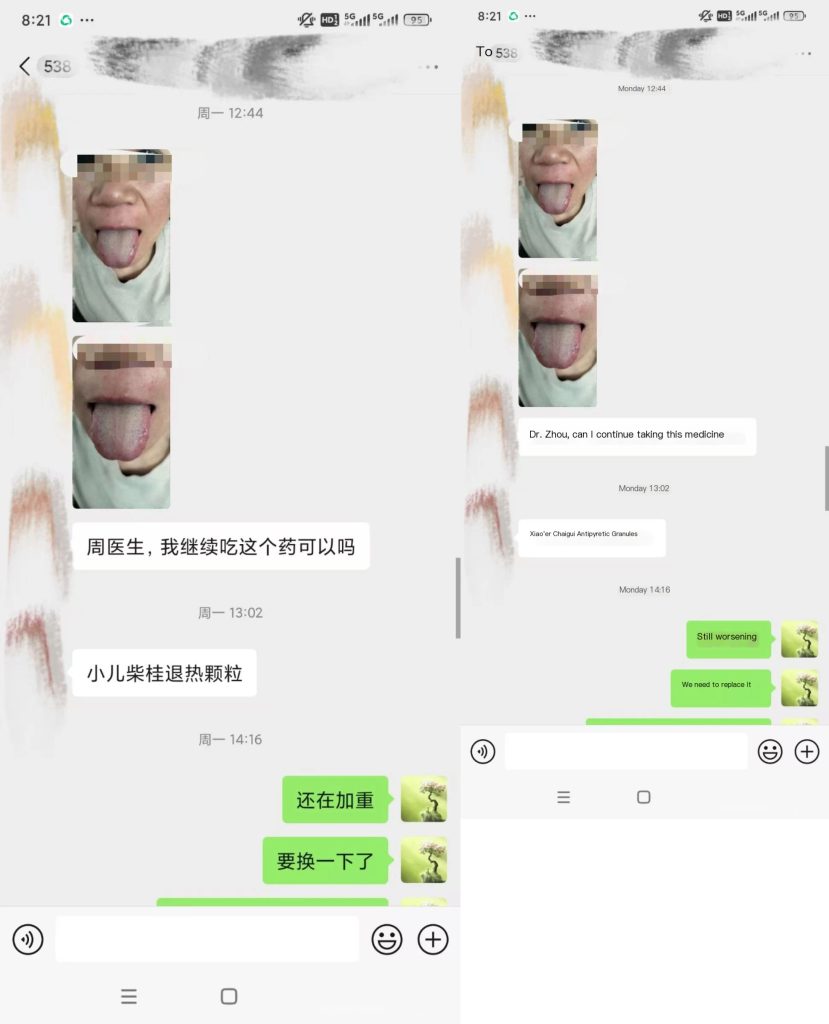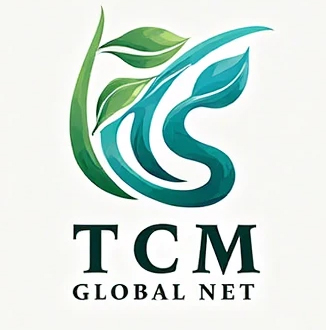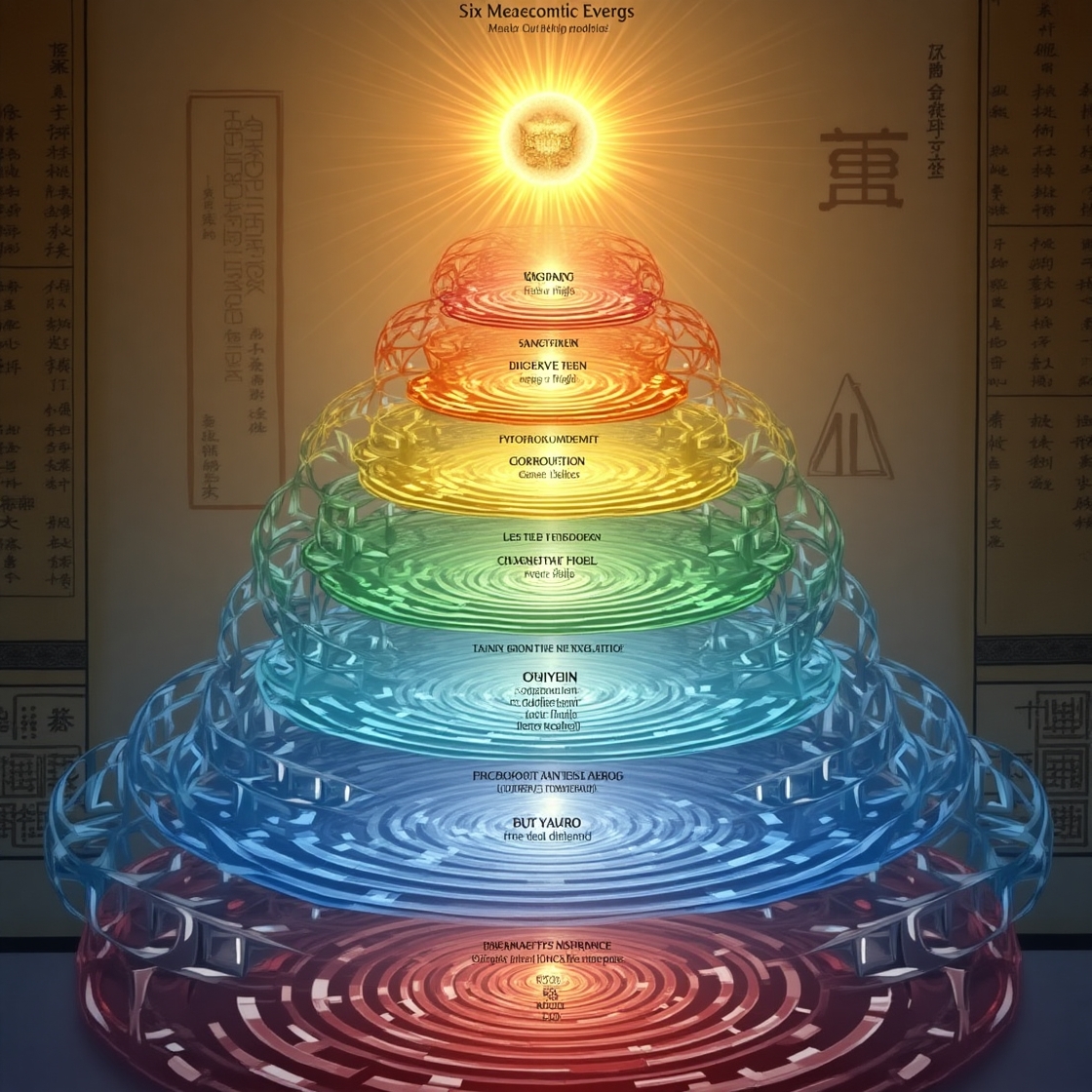I. Source and Evolution of the Six Meridians Syndrome Differentiation
1. From the “Inner Canon” to the “Treatise on Cold Damage”
- ”Plain Questions – Chapter on Heat” first proposed the theory of “three yin and three yang” six meridians, but did not directly relate it to clinical syndrome differentiation.
- Zhang Zhongjing creatively developed the six meridians (Taiyang, Yangming, Shaoyang, Taiyin, Shaoyin, Jueyin) into a dynamic energy layer model in the “Treatise on Cold Damage” for analyzing the transmission patterns of exogenous diseases.
2. Zhu Gong’s Naming Contribution in the Song Dynasty
- Zhu Gong first named the “three yin and three yang diseases” from the “Treatise on Cold Damage” as “six meridians” in the “Classified Book for Saving Lives”, but its essence is a six-layer energy defense system, not just a concept of meridians.
When it comes to the “six meridians syndrome differentiation” in the “Treatise on Cold Damage and Miscellaneous Diseases”, it is not exactly the same concept as the six meridians in the “Inner Canon”.
The “Treatise on Cold Damage” does not mention the name of the six meridians. Throughout the entire “Treatise on Cold Damage”, it discusses the diagnosis and treatment of Taiyang disease, Yangming disease, without mentioning Taiyang meridian or Yangming meridian. The one who named it six meridians syndrome differentiation was not Zhang Zhongjing, but Zhu Gong from the Song Dynasty. In his “Classified Book for Saving Lives”, he first referred to the three yin and three yang diseases in the “Treatise on Cold Damage” as six meridians, and this is where our later generations’ concept of six meridians syndrome differentiation comes from. The reason Zhu Gong called it six meridians is directly derived from the “Plain Questions – Chapter on Heat”.
The original six meridians in the “Treatise on Cold Damage” refer to six different layers of energy, which you can also understand as different defense mechanisms.

II. Core Theory of the Six Meridians Energy Layers
(With Energy Layer Diagram)
1. Correspondence between Six Meridians and Energy
| Six Meridians | Energy Level | Physiological Function | Pathological Manifestation |
|---|---|---|---|
| Taiyang | Surface Defense | Regulating body temperature, resisting external pathogens | Aversion to cold, fever, absence of sweat or spontaneous sweating |
| Yangming | Internal Supply | Digestion and absorption, generation of qi and blood | High fever, constipation, thirst |
| Shaoyang | Pivotal Regulation | Regulation of qi movement, balance of yin and yang | Alternating chills and fever, fullness in the chest and hypochondrium |
| Taiyin | Generation of Qi and Blood | Transportation and transformation by spleen and stomach, distribution of body fluids | Abdominal distension, loose stools, loss of appetite |
| Shaoyin | Fundamental Nourishment | Interaction between heart and kidney, storage of yang qi | Cold limbs, listlessness |
| Jueyin | Dynamic Balance | Liver qi dispersion, transformation between yin and yang | Cold hands and feet, vomiting of roundworms |
2. Dialectical Relationship between Meridians and Energy Layers
- Taiyang Meridian (Bladder Meridian, Small Intestine Meridian): Governs surface defense, when meridian qi is abundant, pores open and close freely (like Gui Zhi Tang stimulating Taiyang layer yang qi).
- Yangming Meridian (Stomach Meridian, Large Intestine Meridian): Rich in qi and blood, serves as an “energy reinforcement unit” (like using He Gu point for sweating, which requires borrowing qi from the Yangming Meridian).
- Taiyin Meridian (Spleen Meridian, Lung Meridian): When the spleen and stomach are deficient, all diseases arise (like treating children’s cough by strengthening the spleen rather than just stopping the cough).
How are the Taiyang, Shaoyang, Yangming, Taiyin, Shaoyin, and Jueyin meridians related to different levels of energy? Meridians are the specific manifestations of different levels of energy. But energy is not equivalent to just meridians.
For example: the Hand Taiyang Small Intestine Meridian and the Foot Taiyang Bladder Meridian. They both belong to the Taiyang level of energy. They both govern the surface: the surface that contacts the outside world. When the Bladder Meridian’s qi is abundant, the back is less likely to get cold, and less likely to catch a cold. When the Small Intestine Meridian’s qi is abundant, food is easily digested without stagnation.
The Taiyang in the “Treatise on Cold Damage” is different from the Taiyang meridian. The Taiyang layer is the surface energy, not limited to the skin areas where the Hand and Foot Taiyang meridians run, the entire skin can be attributed to the Taiyang layer. However, by stimulating the qi of the Hand and Foot Taiyang meridians, the effect of opening all the pores of the body can be achieved.
And for our Taiyang surface syndrome, using the medical principle of stimulating the Taiyang meridian’s qi to relieve the exterior, such as drinking a bowl of Cong Chi Tang, Ginger Soup, or Gui Zhi Tang, all stimulate the body’s yang qi. The first to be activated is the Taiyang layer.
Similarly, we can also directly scrape the back, use acupuncture, etc. Speaking of acupuncture, we might not needle the Taiyang meridian, but rather the Yangming meridian, like using the He Gu point to induce sweating. Why? Because the Yangming meridian is the only one of the twelve regular meridians that is rich in both qi and blood. The reason people catch a cold is still because the Taiyang meridian’s qi is insufficient. So, we divert some energy from the most abundant Yangming meridian, like a reinforcement unit.
And if it comes to coughing? At this point, you need not only to relieve the exterior but also to clear the lungs and relieve the exterior. The reason it turns into a cough is because there is an internal and external cooperation of the Taiyin. Many children directly cough after catching a cold, which is directly related to the deficiency of the lungs and spleen. And some doctors prescribe formulas that only clear the lungs and stop the cough, without paying attention to the spleen and stomach. So, a situation may occur: the child gets better, but the next time they catch a cold, they cough directly again.

III. Clinical Practice: Application Logic of Six Meridians Syndrome Differentiation
(With Tongue Diagnosis and Medication Guide)
1. Taiyang Surface Syndrome: Relieving the Exterior First
- Tongue Diagnosis: Pale red tongue, thin white coating, floating and tight pulse.
- Classic Formulas:
- Gui Zhi Tang (Harmonizing营卫, activating Taiyang layer yang qi).
- Cong Chi Tang (Dietary therapy: 3 scallions + 10g of fermented soybeans, inducing sweating to relieve the exterior).
- External Treatment: Scraping the back (along the Bladder Meridian) or moxibustion at the Da Zhui point.
2. Yangming Internal Syndrome: Purging the Bowels and Clearing Heat
- Tongue Diagnosis: Red tongue with yellow coating, surging and large pulse.
- Classic Formulas:
- Bai Hu Tang (Gypsum + Anemarrhena to clear heat in the Yangming qi division).
- Tiao Wei Cheng Qi Tang (Rhubarb + Mirabilite to purge the bowels and clear heat).
3. Shaoyang Pivotal Syndrome: Harmonizing Shaoyang
- Tongue Diagnosis: Red tongue with thin yellow coating, wiry and fine pulse.
- Classic Formulas:
- Xiao Chai Hu Tang (Bupleurum + Scutellaria to harmonize Shaoyang, balancing liver, gallbladder, spleen, and stomach).
4. Taiyin Spleen Deficiency: Nourishing the Earth to Generate Métal
- Tongue Diagnosis: Pale and swollen tongue, teeth marks on the edges, white and greasy coating.
- Classic Formulas:
- Si Jun Zi Tang (Ginseng + White Atractylodes + Poria + Licorice to strengthen the spleen and tonify qi).
- Shen Ling Bai Zhu San (Enhanced to remove dampness and stop diarrhea).
5. Shaoyin Heart and Kidney: Restoring Yang and Rescuing from Collapse
- Tongue Diagnosis: Pale purple tongue, gray-black coating, deep and slow pulse.
- Classic Formulas:
- Si Ni Tang (Aconite + Dried Ginger + Honey-fried Licorice to restore yang and rescue from collapse).
6. Jueyin Liver Reversal: Harmonizing Yin and Yang
- Tongue Diagnosis: Crimson tongue, yellow and dry coating, wiry and hesitant pulse.
- Classic Formulas:
- Wu Mei Wan (Black Plum + Coptis + Aconite, using both cold and hot to harmonize Jueyin).
IV. Modern Misinterpretations and Return to Classics
(With Clinical Case Analysis)
1. Common Misconceptions
- Misconception One: “Six meridians are just six meridians” → Truth: Six meridians are dynamic energy layers, encompassing meridians, viscera, and qi transformation functions.
- Misconception Two: “Yangming meridian rich in qi and blood = can be used freely for sweating” → Risk: Depleting yin fluids, worsening yin deficiency (Case: A patient overused Ma Huang Tang, leading to worsened constipation).
2. Return to Classics: Six Meridians Syndrome Differentiation for Children’s Cough
- Case: 4-year-old child with a cough after catching a cold, pale tongue with white coating, floating and tight pulse.
- Mistreatment: Using only cough syrup (treating the symptoms, not the root cause).
- Correct Treatment: Gui Zhi Tang + Fu Ling Xing Ren Gan Cao Tang (relieving the exterior, clearing the lungs + strengthening the spleen and removing dampness), cough stopped after 3 doses.


Laisser un commentaire